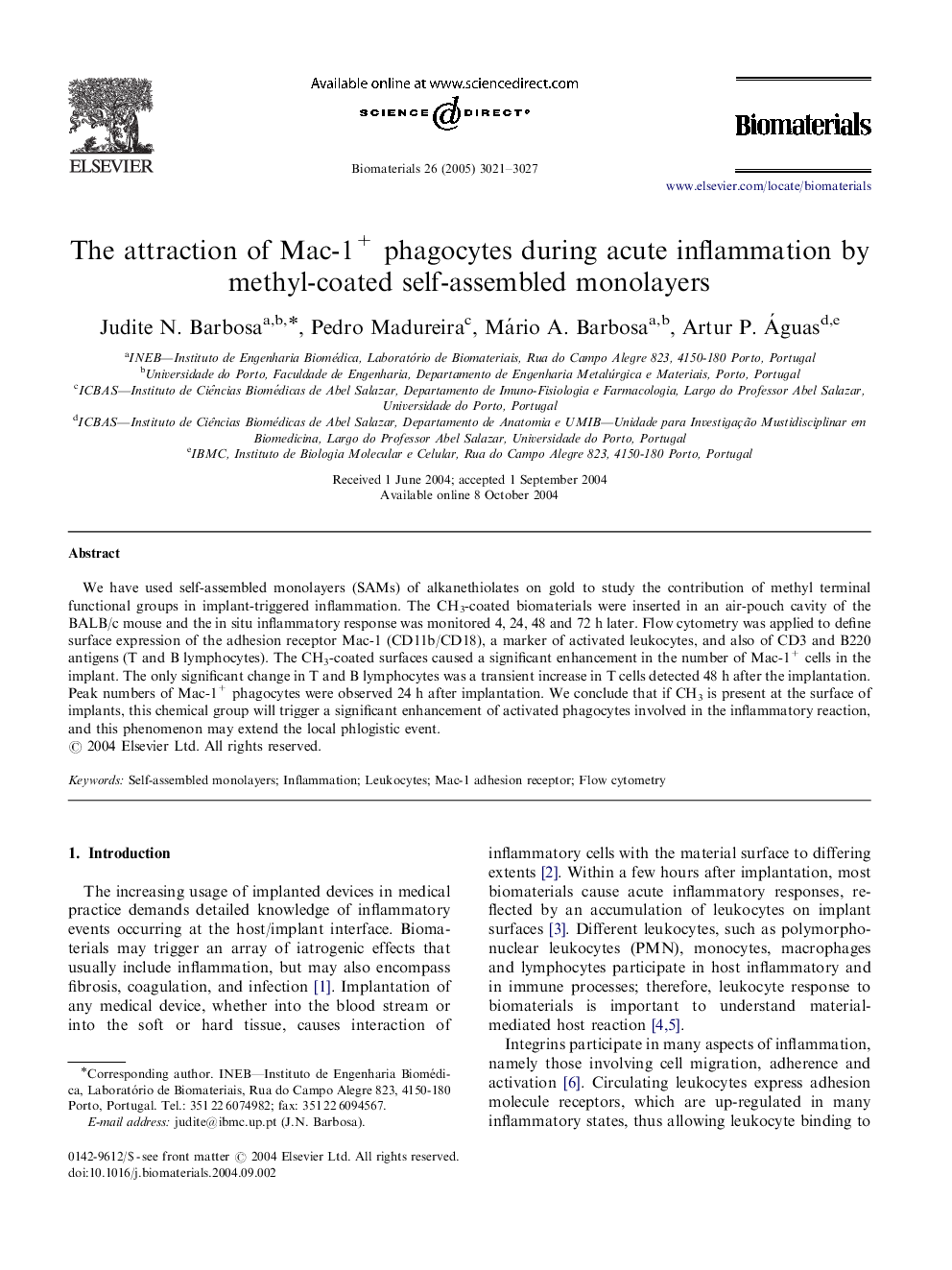| Article ID | Journal | Published Year | Pages | File Type |
|---|---|---|---|---|
| 12251 | Biomaterials | 2005 | 7 Pages |
We have used self-assembled monolayers (SAMs) of alkanethiolates on gold to study the contribution of methyl terminal functional groups in implant-triggered inflammation. The CH3-coated biomaterials were inserted in an air-pouch cavity of the BALB/c mouse and the in situ inflammatory response was monitored 4, 24, 48 and 72 h later. Flow cytometry was applied to define surface expression of the adhesion receptor Mac-1 (CD11b/CD18), a marker of activated leukocytes, and also of CD3 and B220 antigens (T and B lymphocytes). The CH3-coated surfaces caused a significant enhancement in the number of Mac-1+ cells in the implant. The only significant change in T and B lymphocytes was a transient increase in T cells detected 48 h after the implantation. Peak numbers of Mac-1+ phagocytes were observed 24 h after implantation. We conclude that if CH3 is present at the surface of implants, this chemical group will trigger a significant enhancement of activated phagocytes involved in the inflammatory reaction, and this phenomenon may extend the local phlogistic event.
